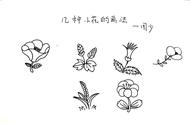
重点短语:
1. make cards 制作卡片
2. on the playground 在操场上
3. in the library 在图书馆
4. in the gym在体育馆
5. on the shelf在书架上(shelves 复数)
6. at the Lost and Found 在失物招领处
7.clean the room打扫房间
8.have a soccer game 举行足球比赛
9. have an English class 上英语课
10. write a letter 写信
11. some of his photos= some photos of his 他的一些照片
12. on time 准时/in time及时
13. do better in sth 在某方面做得较好
14. show sb. around… 带领某人参观……
15. at the moment“此刻,现在”= now.
16. plan v.计划 plan to do sth
17. be kind to sb
=be friendly to sb 对某人很友好
重点短语:
1. --What are you doing?
-- He is cleaning the dormitory.
2.-- Are you doing your homework?
--Yes, I am./No, I am not.
3. --How long can I keep them?
--Two weeks.
4. --Thank you.
--It’s a pleasure/A pleasure / My pleasure.
别客气。
5. --Sorry, I don’t have any.
--Thank you all the same.
仍然感谢你。
重点语法:
现在进行时
基本结构:
肯定式:am/is/are doing(现在分词)
否定式:am/is/are not doing(现在分词)
一般疑问式:Am/Is/Are 主语 doing(现在分词) 其他
特殊疑问式:特殊疑问词 一般疑问式
They’re having a meeting now. 他们现在正在开会。
They aren't having a meeting now. 他们现在没有在开会。
Are they having a meeting now? 他们现在正在开会吗?
What are they doing now? 他们现在正在做什么?
基本用法:
1. 表示此时此刻正在发生的事情。常与now,at the moment,look,listen等词连用。
The little boy is watching TV now. 这个小男孩现在正在看电视。
Listen!She is playing the guitar in the next room. 听!她正在隔壁房间弹吉他。
2. 表示现阶段一直在进行着或是重复发生着的动作,不强调此时此刻正在做。常与表示时间段的时间状语连用。
I am studying computer this term. 这个学期我一直在学习计算机。
3. 表示说话人褒义或贬义的情感色彩,如赞许、批评、喜欢、厌恶等。此时常与alway、often等频度副词连用。
He is always thinking of others , not of himself. 他总是为他人着想,而不为自己。(表示赞许)
One of my roommates is often leaving things about. 我的一个室友经常乱扔东西。(表示不满)
4. 表示在近期按计划或安排要发生的动作。(现在进行时表示一般将来的含义。)
① 瞬时动词的进行时在任何情况下都表示将来含义。这些动词包括go , come , leave,arrive , return等。
I am leaving.
我将要离开了。
I am leaving tomorrow.
我将会明天离开。
② 持续动词的进行时,只有在有将来时间状语或将来语境的情况下才可以表示将来含义。
An American professor is giving a lecture this afternoon.
今天下午一位美国教授将要作报告。(将来含义)
An American professor is giving a lecture.
一个美国教授正在作报告。(进行含义)
现在分词(doing)的变化规则:
1. 一般在情况下,在动词词尾加-ing。
go——going
play——playing
know——knowing
2. 以不发音的字母e结尾动词,先去e再加-ing。
make——making
arrive——arriving
come——coming
3. 以重读闭音节结尾,且动词词尾只有一个辅音字母时,先双写这个辅音字母,再加-ing。
run——running
stop——stopping
swim——swimming
run——running
put——putting
sit——sitting
begin——beginning
plan——planning
cut——cutting
get——getting
shop——shopping
chat——chatting
regret——regretting
dig——digging
4. 以-ie结尾,先将-ie改成y,再加-ing。
tie——tying
die——dying
lie——lying

























